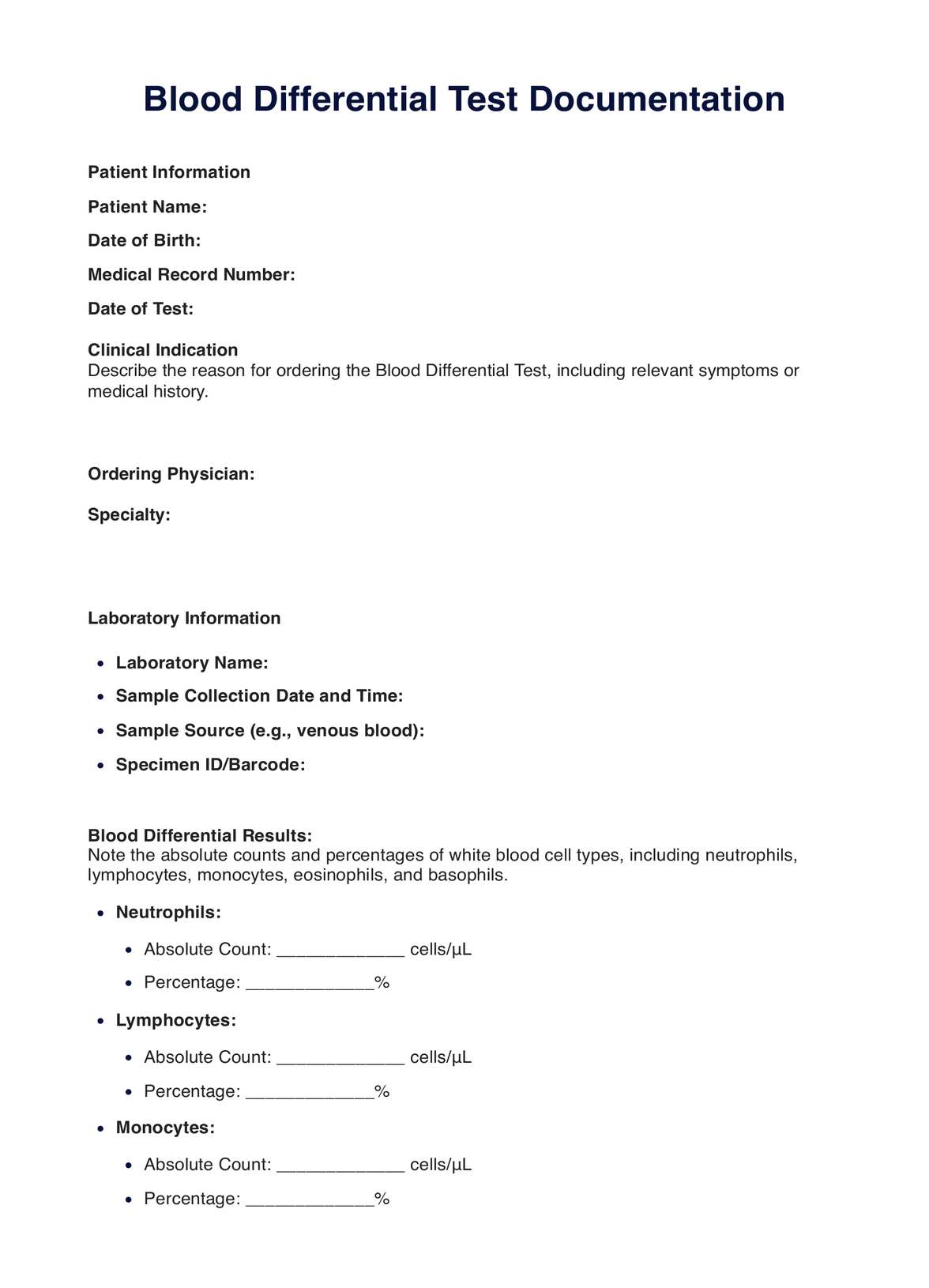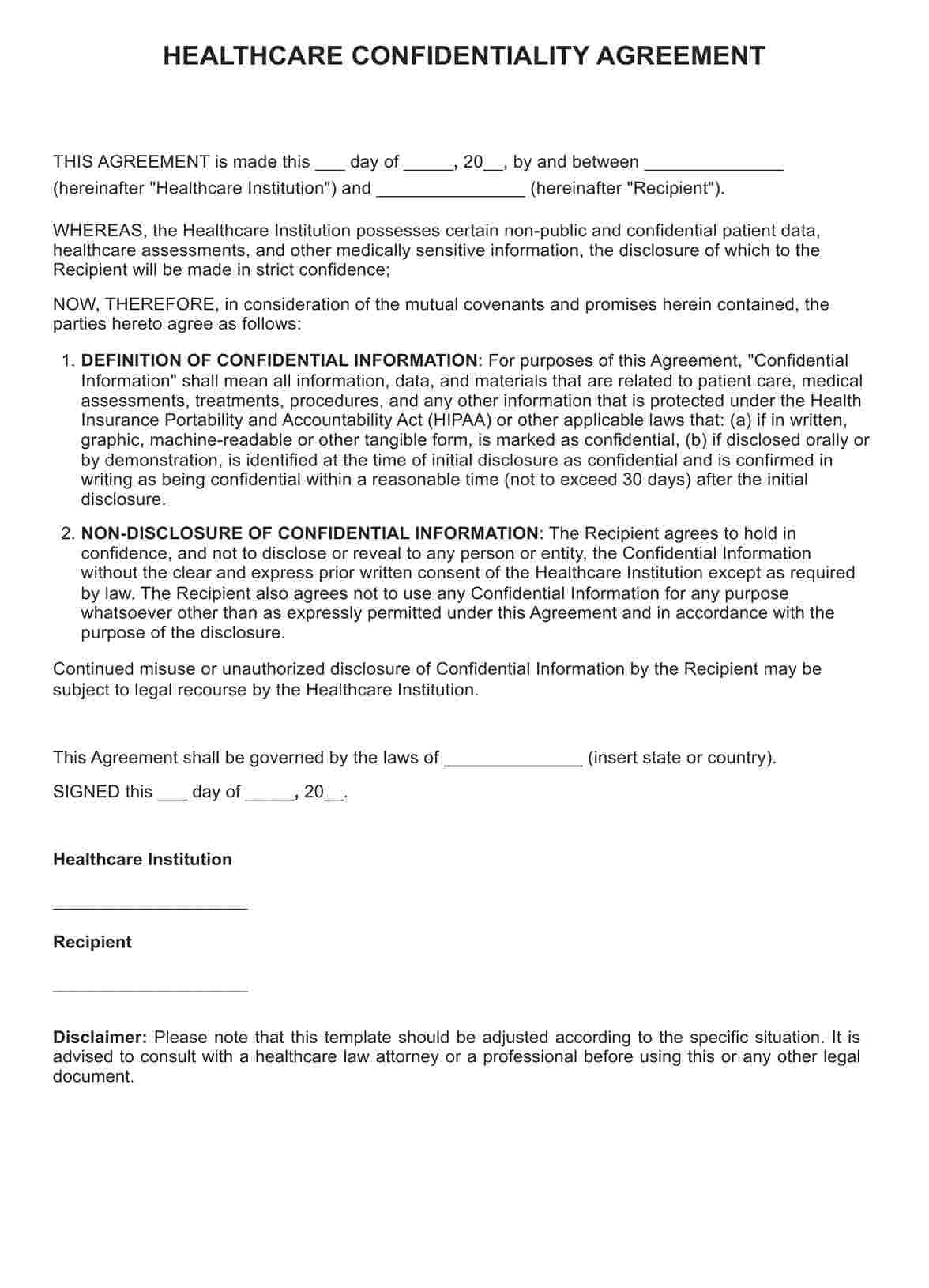Blood Differential
Discover the importance of Blood Differential Tests in healthcare. Learn about their uses, results, and significance in diagnosing medical conditions.


What is a Blood Differential Test?
A blood differential test, also known as a white blood cell differential count or WBC differential, is a medical laboratory test that provides valuable information about the types and relative quantities of white blood cells (WBCs) in a person's bloodstream. White blood cells are a crucial part of the immune system and are vital in defending the body against infections, diseases, and foreign invaders.
The test is typically performed as part of a complete blood count (CBC), a routine blood test that measures various components of the blood, including red blood cells, white blood cells, and platelets. The blood differential test specifically focuses on the white blood cell component.
During a , a small blood sample is drawn from a patient's vein, usually from the arm. This blood sample is then analyzed in a laboratory using specialized equipment and techniques. The test identifies and quantifies different types of white blood cells, including neutrophils, lymphocytes, monocytes, eosinophils, and basophils. Each of these cell types has unique functions in the immune response, and their proportions can give important insights into a patient's health.
An abnormal blood differential count can indicate various medical conditions, such as infections, inflammatory diseases, autoimmune disorders, leukemia, and other hematological disorders. By evaluating the differential count and the overall white blood cell count, healthcare providers can narrow down potential causes of illness, monitor treatment progress, and make informed decisions about further diagnostic tests and therapies.
Blood Differential Test Template
Blood Differential Test Example
How Does It Work?
1. Blood Sample Collection
A healthcare professional collects a small blood sample from the patient's vein, typically from the arm. The sample is collected using a sterile needle and stored in a vacuum-sealed tube to prevent contamination.
2. Sample Preparation
The blood sample is processed in a laboratory setting. It is often treated with an anticoagulant to prevent clotting and maintain its liquid state for analysis.
3. Blood Smear Preparation
Sometimes, a blood smear is created by spreading a thin layer of the blood sample onto a glass slide. This is often done to visualize and count different types of white blood cells under a microscope.
4. Automated Analysis
The blood sample is introduced into specialized automated laboratory equipment, such as a hematology analyzer. The analyzer uses advanced technology, including flow cytometry and laser-based detection, to identify and count the various types of white blood cells in the sample.
5. Differential Count
The analyzer calculates the percentage and absolute count of each type of white blood cell, including neutrophils, lymphocytes, monocytes, eosinophils, and basophils.
6. Report Generation
The results are compiled into a comprehensive report, including the differential and white blood cell counts. The report is generated electronically and sent to the healthcare provider responsible for the patient's care.
7. Interpretation
The healthcare provider interprets the results in the context of the patient's medical history and symptoms. Abnormal counts may suggest various medical conditions, and further tests may be ordered for a definitive diagnosis.
8. Clinical Decision-Making
The blood differential test results are crucial in diagnosing and monitoring conditions such as infections, leukemia, and autoimmune diseases. Treatment decisions and monitoring strategies are often based on the information provided by this test.
When Would You Use This Test?
The Blood Differential Test is employed in various medical scenarios to assist healthcare practitioners in making accurate diagnoses and guiding appropriate treatments. Here, we will focus on specific situations and instances when it is crucial to use this test:
- Infection Diagnosis: When a patient presents with symptoms of infection, such as fever, chills, or unusual fatigue, healthcare providers should consider a Blood Differential Test. It helps identify the type of infection (bacterial, viral, or fungal) based on the white blood cell differential count. Elevated levels of neutrophils may suggest a bacterial infection, while increased lymphocytes may indicate a viral infection.
- Hematological Disorders: Hematologists employ the Blood Differential Test to diagnose and monitor various blood disorders, including leukemia, lymphoma, and myelodysplastic syndromes. Abnormalities in the proportions of different white blood cell types can provide valuable diagnostic clues.
- Autoimmune Conditions: Rheumatologists and immunologists use the test to assess patients suspected of having autoimmune diseases like lupus, rheumatoid arthritis, or vasculitis. Unusual patterns in white blood cell counts, particularly elevated neutrophils or lymphocytes, may suggest autoimmune inflammation.
- Cancer Treatment: Oncologists rely on the Blood Differential Test to monitor cancer patients undergoing chemotherapy or radiation therapy. A decline in white blood cell counts, particularly neutrophils (neutropenia), may necessitate treatment adjustments to avoid infections.
- Sepsis Evaluation: When sepsis is suspected in emergency medicine, the Blood Differential Test is crucial. A significantly elevated white blood cell count or a disproportionate shift in differential counts can signal a severe infection requiring immediate intervention.
- Pediatric Assessments: Pediatricians use the test in children with recurring infections, unexplained fevers, or suspected immune deficiencies. It helps in diagnosing conditions like childhood leukemia and evaluating immune system health.
- Preoperative Screening: Surgeons may order Blood Differential Tests as part of a preoperative assessment to ensure that patients are in optimal health and have no underlying infections or immune-related issues that could complicate surgery.
What do the Results Mean?
Interpreting the results of a blood differential test is essential in understanding a patient's health and diagnosing potential medical conditions. Here are the expected results and their meanings:
- Neutrophils: Neutrophils are the most abundant type of white blood cells and play a key role in fighting bacterial infections. Elevated neutrophil levels (neutrophilia) may indicate a bacterial infection, inflammation, or physical stress. Low levels (neutropenia) can result from bone marrow disorders, chemotherapy, or certain medications, increasing the risk of infections.
- Lymphocytes: Lymphocytes are essential for immune responses, particularly against viruses and cancer cells. An increased lymphocyte count (lymphocytosis) may suggest viral infections, chronic lymphocytic leukemia, or lymphoproliferative disorders. Decreased levels can result from HIV infection, immune deficiencies, or medication side effects.
- Monocytes: Monocytes help remove dead or damaged cells and are involved in immune responses. Elevated monocyte levels can occur in chronic infections, inflammatory conditions, or certain cancers. Low monocyte counts are less common but may indicate bone marrow disorders.
- Eosinophils: Eosinophils play a role in allergies, parasitic infections, and certain inflammatory conditions. High eosinophil counts (eosinophilia) may suggest allergies, asthma, parasitic infections, or autoimmune diseases. Low levels are generally not clinically significant.
- Basophils: Basophils are involved in allergic reactions and inflammation. An increased basophil count is rare but can be seen in allergic reactions, chronic inflammation, or certain leukemias. Low levels are generally not medically significant.
- Total White Blood Cell Count: This represents the overall number of white blood cells in the blood. Elevated white blood cell count (leukocytosis) can indicate infection, inflammation, leukemia, or other disorders. Low total white blood cell counts (leukopenia) can be due to bone marrow disorders, chemotherapy, or autoimmune conditions.
Research & Evidence
The blood differential test has a rich history dating back to the early 20th century when advancements in laboratory medicine and hematology flourished. In the early 1900s, medical researchers and laboratory scientists began exploring ways to differentiate and classify various types of white blood cells. Pioneering work by scientists like Paul Ehrlich, who developed staining techniques, and Karl Landsteiner, who identified blood groups, laid the foundation for modern hematology.
By the mid-20th century, automated hematology analyzers were introduced, significantly improving the accuracy and efficiency of blood cell analysis. The development of flow cytometry and other advanced laboratory technologies further enhanced the precision and speed of blood differential testing.
Research in hematology has been instrumental in understanding the functions and significance of different white blood cell types. Numerous studies have established reference ranges for white blood cell differentials, allowing healthcare providers to identify abnormalities in patients' blood samples.
The correlation between blood differential results and various medical conditions has been extensively researched. For example, elevated neutrophil counts are associated with bacterial infections, while high lymphocyte counts may indicate viral infections.
Blood differential tests are routinely used in clinical trials and research studies to monitor the effects of medications, such as chemotherapy, on white blood cell counts and immune function. The utility of blood differential testing in diagnosing hematological disorders like leukemia and lymphoma is well-documented in medical literature.
Today, the blood differential test is a standard and indispensable component of routine blood analysis in healthcare settings worldwide. Historical development and extensive research and evidence supporting its use underscore its significance in diagnosing and managing various medical conditions, from infections to blood disorders and autoimmune diseases. The advancement of laboratory techniques and technology continues to improve this essential diagnostic tool's accuracy and clinical relevance.
References
- Blood differential. (n.d.). https://medlineplus.gov/lab-tests/blood-differential/
- Blood differential test. (n.d.). Mount Sinai Health System. https://www.mountsinai.org/health-library/tests/blood-differential-test
- Blumenreich, M. S. (1990). The white blood cell and differential count. Clinical Methods - NCBI Bookshelf. https://www.ncbi.nlm.nih.gov/books/NBK261/
- Complete Blood Cell Count (CBC) with Differential Blood - Mayo Clinic Laboratories | Pediatric Catalog. (n.d.). https://pediatric.testcatalog.org/show/CBC
- Complete Blood Count with Differential - Health Encyclopedia - University of Rochester Medical Center. (n.d.). https://www.urmc.rochester.edu/encyclopedia/content.aspx?contenttypeid=167&contentid=complete_blood_count_w_differential
- Crna, R. N. M. (2018, June 27). What is a differential blood test? https://www.medicalnewstoday.com/articles/322289
- Curry, C. V., MD. (n.d.). Differential blood count: reference range, interpretation, collection, and panels. https://emedicine.medscape.com/article/2085133-overview
- Faacc, T. K. P. D. (2022, August 7). White blood cell (WBC) differential - Testing.com. Testing.com. https://www.testing.com/tests/white-blood-cell-wbc-differential/
- Ross, H. (2019, May 12). Blood differential test. Healthline. https://www.healthline.com/health/blood-differential
- Whitten, C. (2021, December 2). What is a differential blood count? WebMD. https://www.webmd.com/a-to-z-guides/what-is-differential-blood-count
Commonly asked questions
Healthcare providers, including doctors, nurses, and specialists, typically request Blood Differential Tests to diagnose and monitor various medical conditions.
Blood Differential Tests are used when there's a suspicion of infection, blood disorders, or autoimmune diseases or to monitor response to treatments like chemotherapy.
A Blood Differential Test involves analyzing a blood sample to count and classify different types of white blood cells, providing insights into a patient's health and potential medical conditions.
The test itself usually takes a few minutes in a laboratory. However, the overall process, including sample collection and reporting results, may take a few hours to a day, depending on the healthcare facility's procedures.





















-template.jpg)


























































































